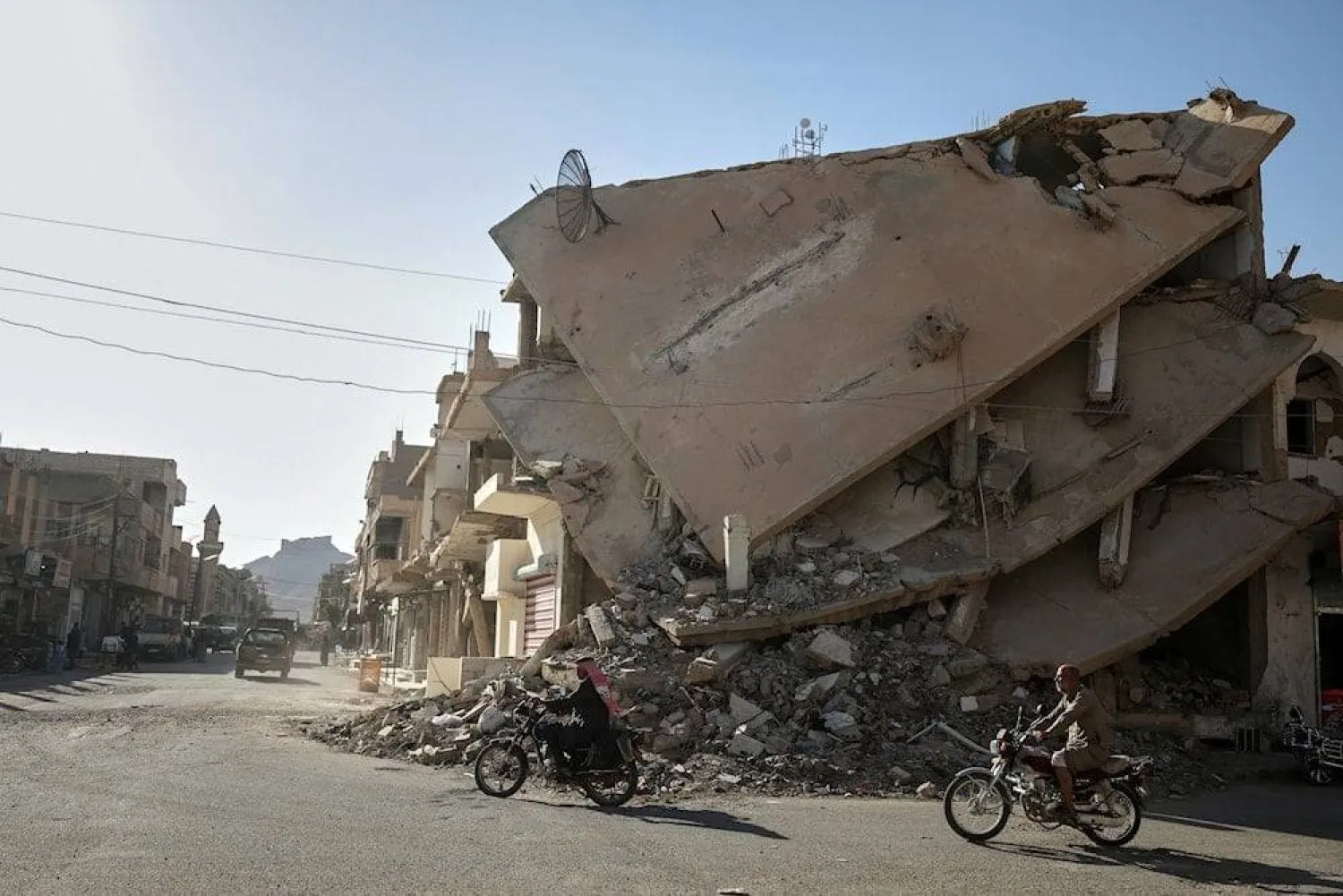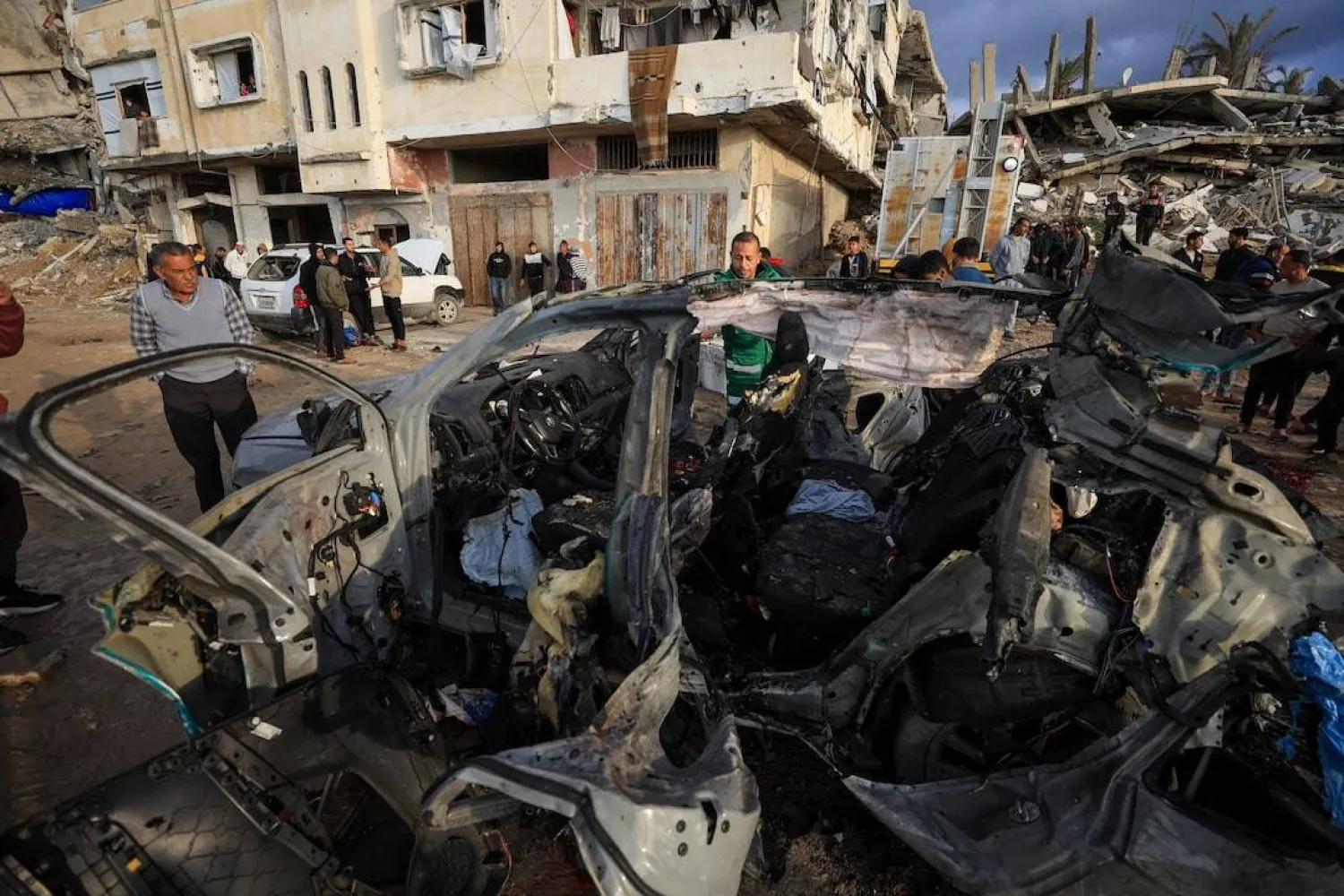The Biden administration said Tuesday that Israel has made some good but limited progress in increasing the flow of humanitarian aid to Gaza and therefore it will not limit arms transfers to Israel as it had threatened to a month ago if the situation had not improved.
Relief groups say conditions are worse than at any point in the 13-month-old war.
State Department spokesman Vedant Patel told reporters the progress to date must be supplemented and sustained but "we at this time have not made an assessment that the Israelis are in violation of US law." It requires recipients of military assistance to adhere to international humanitarian law and not impede the provision of such aid.
"We are not giving Israel a pass," Patel said, adding that the steps Israel has taken have not yet made a significant enough difference. "We want to see the totality of the humanitarian situation improve, and we think some of these steps will allow the conditions for that to continue to progress."
The decision from the US — Israel’s key ally and largest provider of arms — comes despite international aid organizations declaring that Israel has failed to meet US demands to allow greater humanitarian access to the Gaza Strip. Hunger experts have warned that the north may already be experiencing famine.
The Biden administration last month set a deadline expiring Tuesday for Israel to "surge" more food and other emergency aid into the Palestinian territory or risk the possibility of scaled-back military support as Israel wages offensives against Hamas in Gaza and Hezbollah in Lebanon.
The obstacles facing aid distribution were on display this week. Even after the Israeli military gave permission for a delivery to the northernmost part of Gaza — virtually cut off from food for more than a month by an Israeli siege — the United Nations said it couldn't deliver most of it because of turmoil and restrictions from Israeli troops on the ground.
In the south, hundreds of truckloads of aid are sitting on the Gaza side of the border because the UN says it cannot reach them to distribute the aid — again because of the threat of lawlessness, theft and Israeli military restrictions.
Israel has announced a series of steps — though their effect was unclear. On Tuesday, it opened a new crossing in central Gaza, outside the city of Deir al-Balah, for aid to enter. It also announced a small expansion of its coastal "humanitarian zone," where hundreds of thousands of Palestinians are sheltering in tent camps. It connected electricity for a desalination plant in Deir al-Balah.
Israel’s new foreign minister, Gideon Saar, appeared to downplay the deadline, telling reporters Monday he was confident "the issue would be solved." The Biden administration may have less leverage after Donald Trump won the presidential election — he was a staunch supporter of Israel in his first term.
Secretary of State Antony Blinken met with Israeli Prime Minister Benjamin Netanyahu’s closest aide, Ron Dermer, in Washington on Monday to go over the steps that Israel has taken.
Blinken stressed "the importance of ensuring those changes lead to an actual improvement in the dire humanitarian situation in Gaza," the State Department said Tuesday.
President Joe Biden met Tuesday at the White House with Israeli President Isaac Herzog, who said a "major objective" for the US should be reining in Iran and its proxies. Herzog also called for the return of the hostages taken from Israel in the Hamas attack that started the war, to which Biden said, "I agree."
Eight international aid organizations, meanwhile, said in a report Tuesday that "Israel not only failed to meet the US criteria" but also took actions "that dramatically worsened the situation on the ground, particularly in Northern Gaza. … That situation is in an even more dire state today than a month ago."
The report listed 19 measures of compliance with the US demands. It said Israel had failed to comply with 15 and only partially complied with four. The report was co-signed by Anera, Care, MedGlobal, Mercy Corps, the Norwegian Refugee Council, Oxfam, Refugees International and Save the Children.
In an Oct. 13 letter, the US gave Israel 30 days, among other things, to allow a minimum of 350 truckloads of goods into Gaza each day; open a fifth crossing; allow people in coastal tent camps to move inland before the winter; and ensure access for aid groups to northern Gaza. It also called on Israel to halt legislation that would hinder operations of the UN agency for Palestinian refugees, known as UNRWA.
Aid levels remain far below the US benchmarks. Access to northern Gaza remains restricted, and Israel has pressed ahead with its laws against UNRWA.
Israel launched a major offensive last month in the north, where it says Hamas fighters had regrouped. The operation has killed hundreds of people and displaced tens of thousands.
Through October and the first days of November, Israel allowed no food to enter the area, where tens of thousands of civilians have stayed despite evacuation orders.
Last week, Israel allowed 11 trucks to go to Beit Hanoun, one of the north’s hardest-hit towns. But the World Food Organization said troops at a checkpoint forced its trucks to unload their cargo before reaching shelters in the town.
On Tuesday, COGAT — the Israeli military body in charge of humanitarian aid to Gaza — announced it allowed a new delivery of food and water to Beit Hanoun a day earlier. Again, the WFP said that while it tried to send 14 trucks, only three made it to the town "due to delays in receiving authorization for movement and crowds along the route." When it tried to deliver the rest Tuesday, Israel denied it permission, it said.
Aid into all of Gaza plummeted in October, when just 34,000 tons of food entered, only a third of the previous month, according to Israeli data.
UN agencies say even less actually gets through because of Israeli restrictions, ongoing fighting and lawlessness that makes it difficult to collect and distribute aid on the Gaza side.
In October, 57 trucks a day entered Gaza on average, and 75 a day so far in November, according to Israel’s official figures. The UN says it only received 39 trucks daily since the beginning of October.
COGAT said 900 truckloads of aid are sitting uncollected on the Gaza side of the Kerem Shalom crossing in the south.
"Before the organizations give out grades, they should focus on distributing the aid that awaits them," COGAT said in response to the aid groups’ report.
Louise Wateridge, a spokeswoman for UNRWA, said the miliary was not coordinating movements for aid trucks to reach the stacked-up cargos. "If we are not provided a safe passage to go and collect it ... it will not reach the people who need it," she said.
COGAT blamed the drop in October on closures of the crossings for the Jewish high holidays and memorials marking the anniversary of the Oct. 7, 2023, Hamas attack that triggered the war.
The war began when Hamas-led gunmen stormed into southern Israel, killing around 1,200 people, mostly civilians, and abducting around 250 people. Around 100 hostages are still inside Gaza, a third of whom are believed to be dead.
Israel’s bombardment and ground invasion have killed more than 43,000 Palestinians, more than half of them women and children, according to local health authorities, who don’t say how many of those killed were fighters. Around 90% of the population of 2.3 million has been displaced, and hundreds of thousands are packed into squalid tent camps, with little food, water or hygiene facilities.
The United States has rushed billions of dollars in military aid to Israel during the war, while pressing it to allow more aid into Gaza.
Trump has promised to end the wars in the Middle East without saying how. He was a staunch defender of Israel during his previous term, and Netanyahu says they have spoken three times since Trump won the White House last week.









